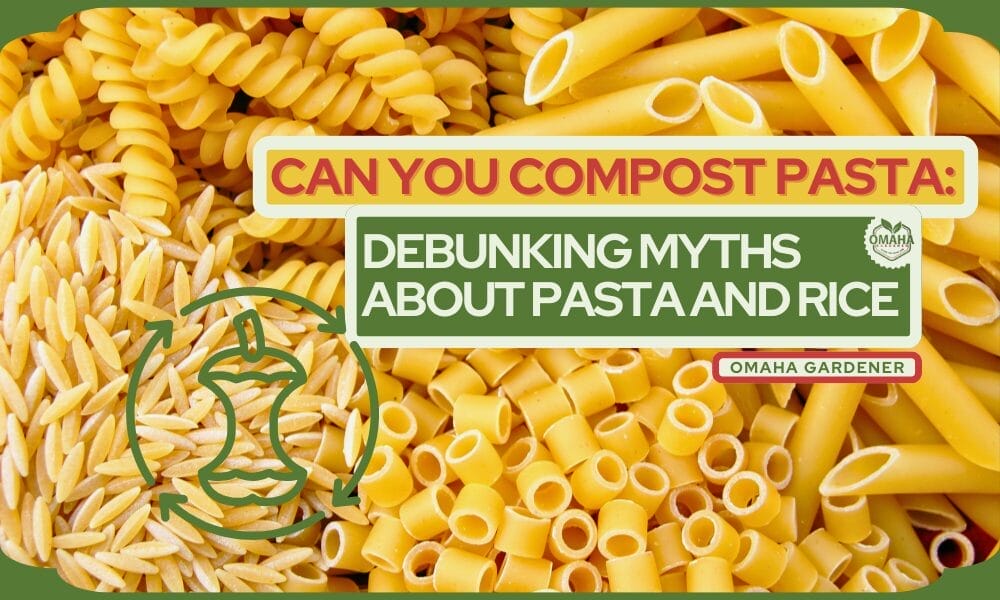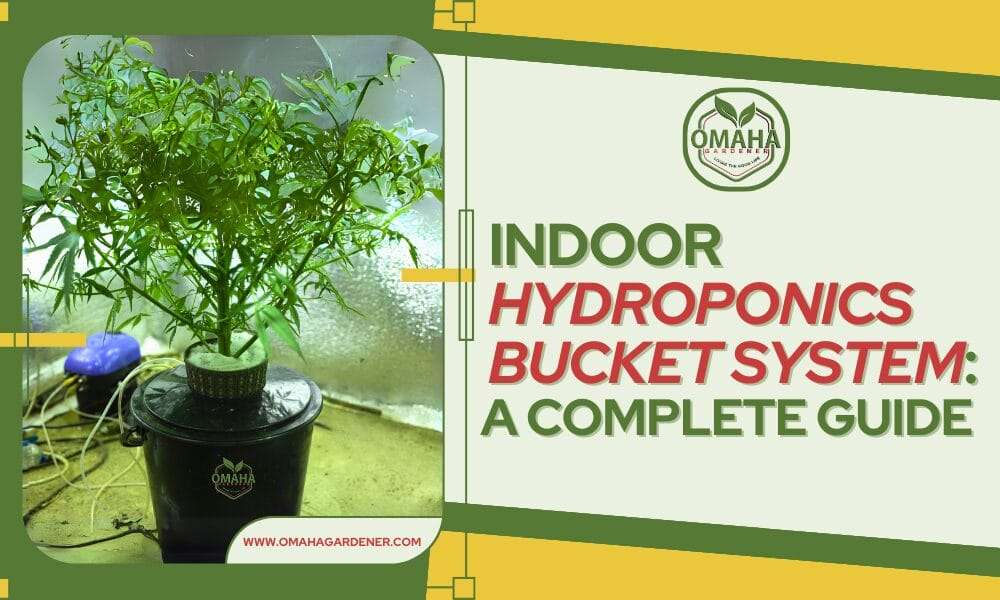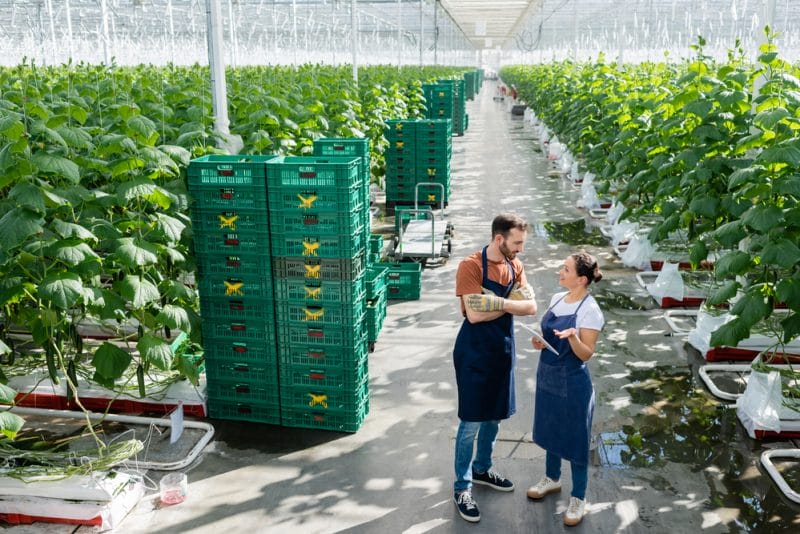
Hydroponics is a method of growing plants that replaces soil with water-based solutions, also known as nutrient solutions. Can this gardening method take over the world? In this article, I'll explain why I believe this is possible. But first, a snippet about hydroponics. What is it?
Hydroponics is used to grow various crops, including lettuce, tomatoes, strawberries, herbs, and many others. It's also becoming more popular in urban farming and indoor gardening, where space is limited, and growing conditions may not be optimal for traditional soil-based methods.
In hydroponic systems, the plants are usually placed in containers filled with an inert growing medium like perlite, vermiculite, or coconut coir. The roots of the plants are then suspended in the water solution, which is constantly recirculated through the system to ensure that the plants receive a steady supply of nutrients.
Table of Contents
This past Christmas, I received The AeroGarden Sprout with Gourmet Herbs Seed Pod Kit from my family as a gift. It is an indoor hydroponic garden system that allows me to grow fresh herbs, vegetables, and flowers year-round. I guess it was their way of saying I could continue my gardening passion in the middle of winter. Anyway, the kit includes everything needed to get started, including three seed pods, plant food, and an LED grow light. With its compact size and easy-to-use design, the AeroGarden Sprout is a great option for anyone interested in indoor gardening. With the ability to grow plants with little resources, I can't help but wonder if hydroponics can dominate the gardening scene. Let's take a deeper dive.
1. Efficient Fertilizer Use
Hydroponic plants use nutrients efficiently. Because the nutrients are kept in a container, no nutrients are lost, unlike traditional farming, where some fertilizers end up in rivers, poisoning the water that humans and animals drink.
Using hydroponics actually conserves nutrients, which may be surprising to some. So, here are some more details on why this is the case.
Precise Nutrient Control
In hydroponics, the nutrient solution can be precisely controlled and adjusted to meet the needs of the plants. This means the plants can receive the right amount of nutrients without excess or deficiency.
Reduced Waste
In traditional agriculture, much of the fertilizer applied to the soil is lost to leaching or evaporation, which can result in environmental pollution and wasted resources. In hydroponics, the nutrient solution is recirculated and reused, which reduces waste and conserves resources.
Better Uptake
In hydroponics, the nutrients are dissolved in water and delivered directly to the plant roots. This means that plants can absorb nutrients more efficiently compared to soil-based agriculture, where soil microorganisms must first break down the nutrients before the plants can take them up.
Faster Plant Growth
Hydroponic plants can grow faster and more vigorously with the precise control of nutrients and water than traditional soil-based agriculture. This can result in higher yields and more efficient use of resources.
2. Less Water Consumption
Because water is supplied in fixed proportions and a controlled environment, hydroponics uses less water and nutrients.
Plants in soil-based farming rely heavily on water, which can be lost due to evaporation and runoff. This means much water is required to keep soil-based plants healthy, especially in dry areas.
Hydroponics, on the other hand, uses water more efficiently because it gives plants the exact amount of water they require at the exact time they require it. This means no water is lost due to evaporation or runoff, and plants can grow with up to 90% less water than with traditional farming methods.
Furthermore, hydroponic systems can be designed to recycle water, further reducing the amount of water required for plant growth. This is especially useful in areas with limited access to fresh water or areas with scarce water supply.
3. Innovative Farming Without Soil
Hydroponic systems do not require soil; growth is accomplished through the roots and nourished with a nutrient solution. This forward-looking process has developed over time and has gained a large following. We will explore several types of systems later in this blog post.
In 2020, the United States had over 550 commercial hydroponic farms, producing a variety of crops including lettuce, herbs, and tomatoes. The increasing popularity of hydroponics is contributing to a growing trend of sustainable and locally sourced food production.
Source: USDA, “Hydroponic Vegetable Production
4. Hydroponics Yields More
Hydroponics only requires a smaller space yet each system can hold various crops. For instance, in aeroponic systems, one could grow 20+ plants in just a 3 ft x 3 ft space.
The increased harvest quantity is also attributed to the system being in a controlled environment. The growing environment can be precisely controlled in hydroponics, including temperature, humidity, light, and nutrient levels. This allows for optimal growing conditions, which can result in higher yields.
Because hydroponic systems are typically grown indoors or in controlled environments, they are also less susceptible to diseases and pests that can damage crops in traditional agriculture.
5. You Can Plant All-Year-Round, Indoors!
Hydroponics can be grown at any time of year without having to worry about the weather, pests, or other factors that are common in soil farming.
Remember that hydroponics takes advantage of controlled environments. Temperature, humidity, light, and other environmental factors can be adjusted to provide optimal conditions for plant growth. Meaning plants can be grown year-round regardless of the weather conditions.
Hydroponic systems may easily be grown indoors by a sunny window or aided by grow lights.
6. Low-Maintenance System
Hydroponic systems can be set up automatically, eliminating the need for daily watering, cleaning, and crop care.
How can it be a low-maintenance system? Here are a few reasons why:
1. No Soil Maintenance: In hydroponic systems, plants are grown in a soil-free environment, eliminating the need for soil maintenance tasks such as weeding, tilling, or amending soil with nutrients.
2. Fewer Pest Problems: Because hydroponic systems are closed environments, pests and diseases are less common. This means that growers do not have to spend as much time and effort on pest control measures, such as applying pesticides or herbicides.
3. Efficient Nutrient Delivery: Hydroponic systems use nutrient-rich water that is directly delivered to the plant roots. This eliminates the need for fertilization and reduces the risk of nutrient imbalances.
4. Automated Systems: Many hydroponic systems can be automated using timers and sensors, which can regulate the delivery of nutrients, water, and light. This means that growers do not have to monitor the system as frequently, reducing the need for labor.
7. Healthier Harvest
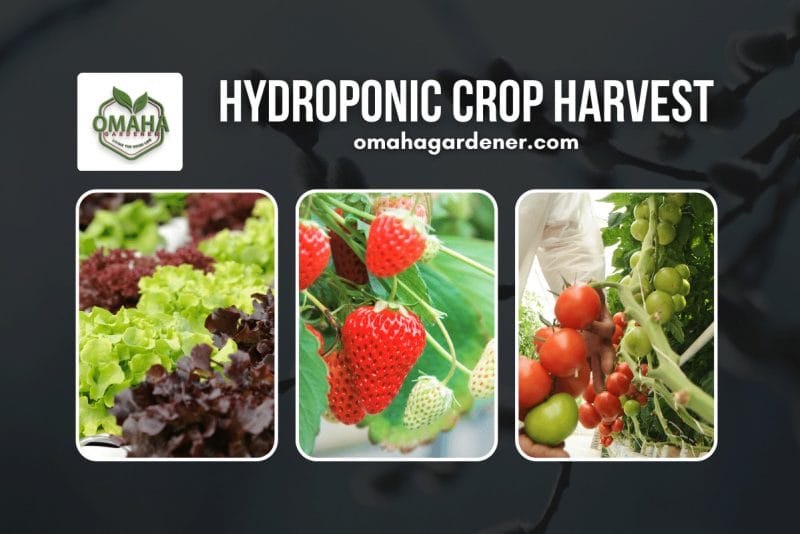
In hydroponic systems, the plants receive their nutrients directly from the water solution, which can result in healthier produce. Additionally, the reduced presence of soil means that there are fewer pests, which can lead to less reliance on harmful chemicals for pest control. In cases where pest control is necessary, natural insect sprays can be used as an alternative to synthetic pesticides.
Perhaps you may be interested in reading a related blog post I wrote about 7 Key Factors to Master in Hydroponic Gardening
Types of Hydroponic Systems
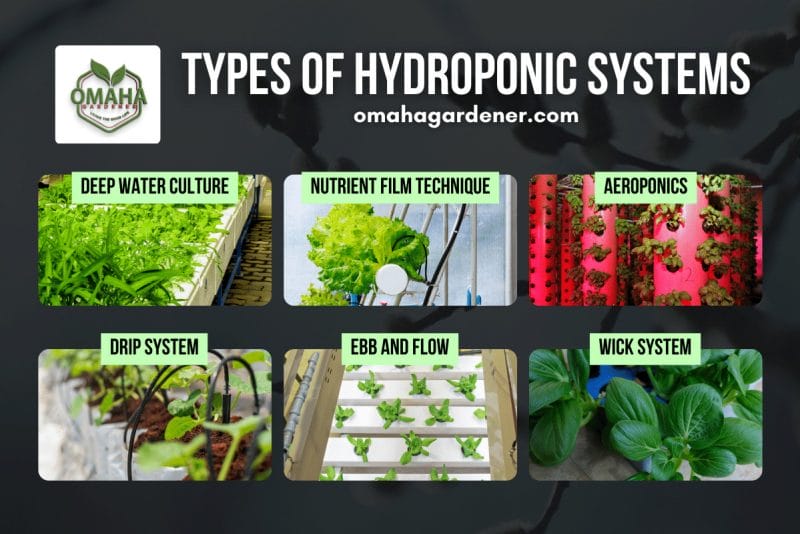
There are a wide array of systems that one could explore in hydroponics, namely:
1. Deep Water Culture
Deep water culture (DWC) is a hydroponic plant-growing method in which plant roots are suspended in a nutrient-rich water solution that may or may not include an air pump. It can be set up as a passive system or an active system.
One of the benefits of the DWC system is its simplicity and ease of use. The system is easy to set up and requires relatively little maintenance compared to other hydroponic systems. Additionally, because the plants are grown in water, they can absorb nutrients more efficiently, leading to faster growth and higher yields.
2. Nutrient Film Technique (NFT)
Nutrient Film Technique employs a pump to deliver the nutrient solution to the grow tray, and a pipeline recycles the nutrient solution that isn't used. The difference is that the nutrient solution constantly flows over the roots in NFT.
One of the benefits of the NFT system is its high efficiency and water conservation. Because the nutrient solution constantly flows over the roots, waterlogging or oxygen deprivation is less likely, which can occur in other hydroponic systems.
Furthermore, the NFT system can be used to grow a wide variety of plants and is particularly well-suited for fast-growing crops such as lettuce, herbs, and strawberries.
3. Ebb and Flow (Flood & Drain)
The Ebb and Flow system, like NFT, uses a water pump to move nutrient solution from the reservoir into the tubes or trays containing the plants; when the nutrient solution reaches a certain level in the trays, it drains back into the reservoir.
In an ebb-and-flow system, plants are typically grown in containers placed on a tray or bench. The nutrient solution is stored in a reservoir and pumped into the tray, flooding the container with the growing medium and surrounding the roots with water and nutrients.
Once the tray is flooded, the nutrient solution can drain back into the reservoir, leaving the growing medium moist but not waterlogged.
The flooding and draining cycle in the ebb and flow system occurs regularly, typically every few hours, which helps ensure that plants receive the right amount of water and nutrients without becoming oversaturated. This system is controlled by a timer, which turns the pump on and off at the appropriate times.
This system is considered a low-maintenance hydroponic system!
4. Drip System
A drip system hydroponics is a method of growing plants in which nutrient-rich water is delivered directly to the plant's roots through a network of tubes or channels. This method is a type of passive hydroponics system where the nutrient solution is fed to the plants by gravity, drop by drop, through emitters or drippers.
The drip system hydroponics is a popular and effective way to grow plants because it provides an optimal balance of water and nutrients and allows for precise control over the plant's environment.
Additionally, it can be used in a variety of settings, including indoor and outdoor environments, and is suitable for growing a wide range of plants, including fruits, vegetables, herbs, and flowers.
5. Aeroponic
Aeroponics is a method of growing plants in which the roots are suspended in air and misted with a nutrient-rich water solution. Aeroponic systems rely on a misting system to deliver nutrients and oxygen directly to the roots.
In an aeroponic system, the plant's roots are placed in a chamber or container, and a fine mist of nutrient solution is sprayed onto the roots at regular intervals. This misting system allows for maximum oxygenation and nutrient uptake, as the roots are not confined or suffocated by water.
What are aeroponic advantages? One of the main advantages of aeroponic hydroponics is that it allows for faster growth and higher yields than traditional soil-based farming. Because the roots have access to a highly oxygenated and nutrient-rich environment, they are able to grow faster and more efficiently.
Additionally, aeroponic systems are highly space-efficient, as they do not require much soil or water.
6. Wick System
The wick hydroponic system is one of the simplest and most basic types of hydroponic systems. It involves using a wick to transport the nutrient solution from a reservoir to the plant's roots.
In a wick system, the plant is typically grown in a container filled with a growing medium such as perlite, vermiculite or coconut coir. A wick, typically made of cotton or nylon, is inserted into the growing medium and placed in the reservoir of the nutrient solution.
As the plant uses up the nutrient solution in the growing medium, the wick passively draws up more solution from the reservoir, providing the plant with a continuous supply of water and nutrients.
One of the benefits of the wick hydroponic system is its simplicity and low cost. The system is easy to set up and requires no electricity or pumps, making it a good option for small-scale or hobbyist growers.
Frequently Asked Questions
What are 3 disadvantages of hydroponics?
1. Hydroponic systems can require a significant upfront investment, including equipment such as pumps, grow lights, and nutrient solutions.
2. Hydroponics requires technical expertise and knowledge to manage the system properly.
3. Hydroponic systems rely on electricity to operate, such as for pumps, grow lights, and temperature control systems.
What plants can grow in hydroponics?
A wide range of plants can be grown in hydroponic systems, including leafy greens, herbs, tomatoes, cucumbers, peppers, strawberries, and even some fruit trees. However, not all plants are equally suited for hydroponic growing. Plants with shallow roots and fast growth rates tend to perform best in hydroponic systems.
Conclusions
Hopefully, by now, you can see my rationale. Hydroponics offers a sustainable, efficient, and high-yielding method of growing plants that can help address some of modern agriculture's challenges. Hydroponic systems have the potential to revolutionize the way we grow food by reducing water usage, minimizing chemical inputs, and enabling year-round crop production. If you decide to dip your toe in the hydroponic gardening world, leave a comment, we'll love to chat about your experience…the good and bad.


